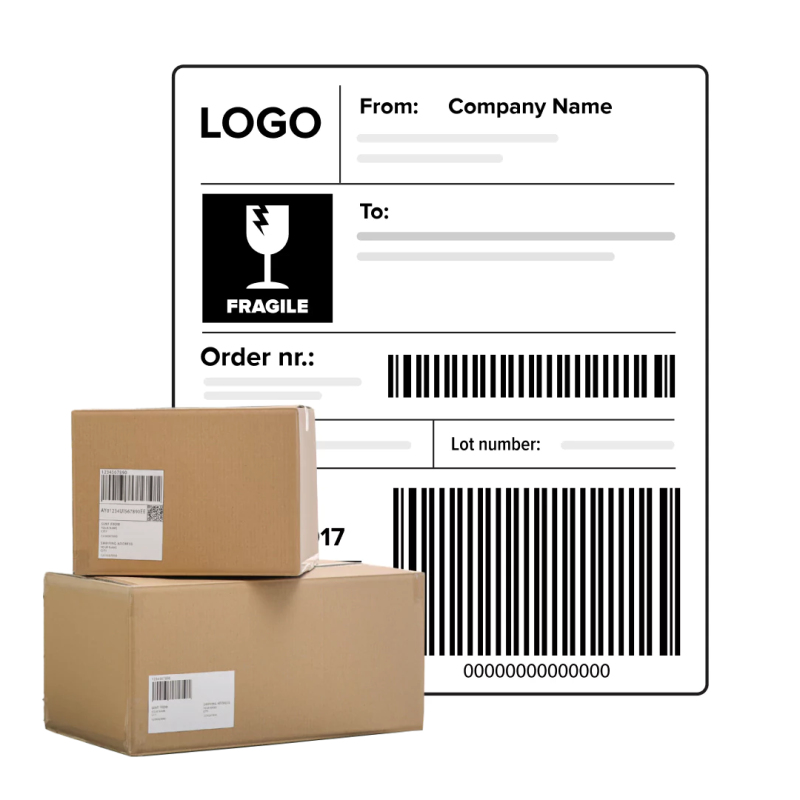
Item Code:
37383023868dBrand:
Shipping labels are essential documents attached to packages that provide critical information for successful delivery. These labels contain the sender's and recipient's addresses, tracking numbers, and special handling instructions. Without a proper shipping label, packages cannot be processed by carriers like USPS, FedEx, or UPS. The label serves as the package's identification throughout its journey from origin to destination.
Every shipping label contains specific elements that ensure proper handling and delivery. The return address identifies the sender and provides a location for return if delivery fails. The destination address must be complete and accurate with street number, city, state, and ZIP code. A unique tracking number allows both sender and recipient to monitor the package's progress. Carrier information specifies which company is handling the shipment. Barcodes enable automated sorting and tracking throughout the shipping process. Package weight and dimensions help determine shipping costs and handling requirements. Service type indicates the shipping speed selected by the sender.
Proper label creation begins with accurate address verification. Incorrect or incomplete addresses cause delivery delays and additional costs. Use clear, legible fonts and ensure sufficient contrast between text and background. Most carriers provide online tools for generating labels that meet their specific requirements. These systems automatically format addresses correctly and include necessary barcodes. When printing labels, use high-quality printers with fresh ink or toner to prevent smudging or fading. Weather-resistant labels or protective sleeves are essential for packages exposed to the elements during transit.
Correct placement ensures labels remain visible and scannable throughout the shipping process. Affix labels to the largest flat surface of the package, avoiding seams, edges, or handles. Never place labels over box seams or tape, as these areas might separate during handling. For irregularly shaped items, use clear packing tape to secure the entire label surface. Always include a duplicate label inside the package as a backup in case the exterior label becomes damaged or detached. Remove or completely cover any old labels to prevent misrouting of your shipment.
International shipments require additional documentation and customs forms that must accompany the shipping label. Hazardous materials need special labels indicating their contents and handling requirements. Fragile items benefit from clearly visible "Handle with Care" labels to alert handlers. Signature confirmation labels notify carriers that recipient authorization is required upon delivery. Insurance labels indicate declared value for high-worth items. Understanding these special requirements prevents delays and ensures proper handling of unique shipments.
The rise of e-commerce has transformed shipping label creation. Online marketplaces often generate labels automatically when sellers make sales. Digital shipping solutions allow businesses to print labels in bulk, saving time and reducing errors. QR codes are increasingly supplementing traditional barcodes, offering more data capacity and easier scanning with mobile devices. Some carriers now offer digital-only labels where the tracking information is associated with a code rather than a physical label. These innovations continue to streamline the shipping process for businesses and consumers alike.
Many shipping problems originate from label errors. Smudged ink renders barcodes unreadable and delays packages. Incorrect weight declarations lead to additional charges or returned shipments. Using the wrong service level label may result in unexpected delays or costs. Poor adhesion causes labels to detach during transit. Address abbreviations that carriers don't recognize can confuse sorting systems. Testing label adhesion and verifying all information before shipment prevents these common issues and ensures smooth delivery.
Shipping labels are more than just address tags; they are sophisticated tools that coordinate the complex movement of packages worldwide. Understanding their components, proper creation, and placement techniques ensures your shipments arrive safely and efficiently. As technology evolves, shipping labels continue to incorporate new features that enhance tracking accuracy and delivery reliability. Whether you're a business shipping products daily or an individual sending occasional packages, mastering shipping label basics is essential for successful deliveries.